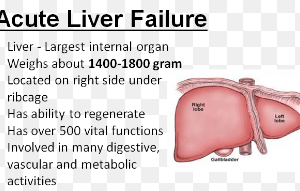
If you’ve been told you have a very low ejection fraction, just how long can you expect to live?
When the ejection fraction is below 20 to 25 percent, it’s considered to be “severely reduced.”
However, two people with an ejection fraction of, say, 20 percent, may present quite differently in a clinical setting, even if they are the same age.
Nevertheless, both such patients will surely at some point wonder how much longer they have to live with such poor cardiac function.
Low Ejection Fraction and Lifespan: Important Questions to Ask
Patient survival depends on various factors, says Roger Mills, MD, cardiologist and former professor of medicine, University of Florida, and author of “240 Beats per Minute. Life with an Unruly Heart.”
• Suppose you learn that your ejection fraction is only 20 percent.
• Should you place all bets on just this number alone?
• Is it necessarily pinpoint precise?
“How accurate is the measurement of ejection fraction?” says Dr. Mills.
“There are a lot of technical issues involved in measuring heart function. Today, echocardiography is by far the most frequently used technology.
“The ’20 percent’ figure probably has a range of plus or minus five percent in most echo labs.”
So perhaps on another day, with a different echocardiography operator, that number may have been reported as 25 percent. Or 15 percent.
“How long has the ejection fraction been that low?” continues Dr. Mills.
“If a previously healthy patient has just had a serious heart rhythm disturbance, a pregnancy, major surgery, chemotherapy or a heart attack with emergency stenting, then a substantial degree of recovery may be possible.
“What else is going on? Are there signs or symptoms of an infectious process such as myocarditis?
“Or has there been a major emotional stress that could cause stress-related heart dysfunction? How old is the patient?”
An 89-year-old with an EF of 20 to 25 percent certainly has less time to live – from a cardiac function standpoint – than does a 70-year-old – assuming that they have very similar medical histories, lifestyle habits and causes of their chronic heart failure.
Six months of aging (time passage) for an 89-year-old heart-patient may be much more significant than six months for a 70-year-old patient.

Freepik.com
“Does he or she have other serious disease(s)?” asks Dr. Mills. This can include longstanding coronary artery disease, which can continue to progress even if the patient has had bypass surgery.
Re-routing of the heart’s plumbing alone does not stop continued plaque buildup inside the arteries.
Chronic renal (kidney) insufficiency is another comorbidity that really factors into how long a person can live with a very reduced ejection fraction.
Poor kidney function often goes hand-in-hand with poor ejection fraction. One-quarter of the heart’s pumped blood goes to the kidneys.
These small organs are very sensitive to reduced blood flow and can become quite impaired over time.
The lifespan for patients with an ejection fraction under 25 percent may be more determined by their kidneys than heart.
In fact, the kidneys might start heading down a path toward chronic kidney disease even in someone with a moderately low EF (e.g., 40 percent).
So in addition to the ejection fraction, the question then becomes, “How healthy are the patient’s kidneys?”
Dr. Mills continues: “Was he or she receiving comprehensive medical treatment at the time the EF was measured? If yes, for how long?”
Very Low Ejection Fraction Is Always a Serious Issue
Dr. Mills explains, “The bottom line is that an EF of 20 percent is a serious finding, but not an absolute ‘end of the line.’
“With today’s drugs and devices, as many as 30 percent of patients with severely reduced ejection fraction can see some degree of improvement with specialized treatment coordinated through a heart failure center.
“That final point is important. If you have been told that you have severely impaired heart function, ask for a consultation with a heart failure center.”
Take note, however, that at some point, even with vigilant treatment and management, medical intervention will no longer be enough to keep things afloat.
Otherwise, people would never die from heart failure or its complications such as end-stage renal failure.
The goal is to maximize length and quality of life – to make each day as good as it can be.

Dr. Mills is the former medical director of the heart failure and heart transplant service at the University of Florida, was a staff cardiologist at The Cleveland Clinic and has authored over 100 peer-reviewed publications.
 Lorra Garrick has been covering medical, fitness and cybersecurity topics for many years, having written thousands of articles for print magazines and websites, including as a ghostwriter. She’s also a former ACE-certified personal trainer.
Lorra Garrick has been covering medical, fitness and cybersecurity topics for many years, having written thousands of articles for print magazines and websites, including as a ghostwriter. She’s also a former ACE-certified personal trainer.
.


























